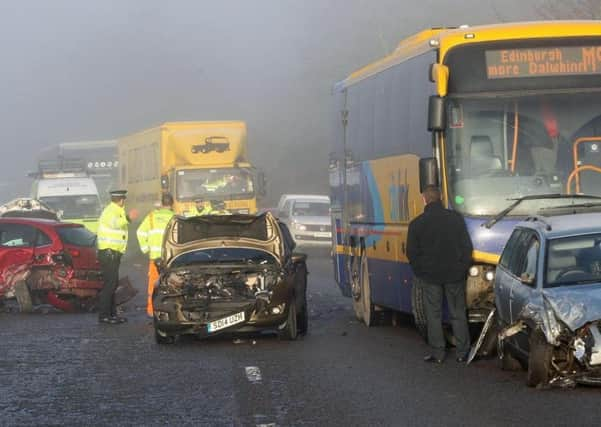A9 closed after 9 vehicles involved in 2 separate crashes


It is believed that low-lying sun reduced visibility for drivers involved in at least one of the accidents, while temperatures of below freezing had been recorded in many parts of Scotland overnight.
Only one person was hurt as a result of the crashes, but is believed to be recovering in hospital.
Advertisement
Hide AdAdvertisement
Hide AdThe first accident happened at 9:20am on Drumossie Brae just south of Inverness, before a second occurred at 9:30am at the junction to Carrbridge at the A938.
Seven vehicles were involved in the first accident including a Volvo coach with 18 passengers, a Ford Ranger, Ford Fiesta, Citroen C3, Volkswagen Passat, Mitsubishi Shogun and a Seat Ibiza.
No-one was injured and police said the road reopened again at around 11:30am.
The second accident at the Carrbridge junction involved a Volkswagen Crafter flatbed van and a lorry. A man in his fifties was airlifted to Raigmore Hospital in Inverness, but is not believed to have life-threatening injuries.
Sergeant Donnie MacKinnon, of Police Scotland’s Road Policing Unit, said: “We believe a contributory factor in the collision on the A9 at Drumossie has been the presence of a low-lying sun, causing reduced visibility for drivers.
“It is fortunate no-one has sustained life-threatening injuries and that of course is the most important thing but these collisions resulted in two separate closures of the main A9 arterial route; which brought with it disruption for all road users.
“Whilst I would like to thank road users for their patience during the closures, it is also important to remind drivers of the importance of driving to the road conditions and adjusting their speed accordingly.”
He added: “In situations of reduced visibility drivers should reduce their speed and extend the distance between them and the vehicle in front. This will not only give them sufficient time to react to what is happening in front of them, but allow then to extend their braking distance so the driver behind also has time to respond.”